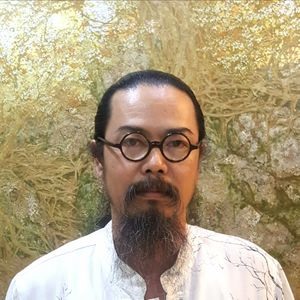 Life & Style
Life & Style

At his second solo exhibition Fairy Land, lacquer painterartist Nguyễn Quốc Huy displays large and distinctive paintings.
 |
At his second solo exhibition Fairy Land, lacquer painterartist Nguyễn Quốc Huy displays large and distinctive paintings. The pieces feature light colours, which are rarely used in lacquer painting.
Huy is one of the most decorated Vietnamese sơn mài (lacquer) artists. His awards include first prize at the National Fine Arts Exhibition in 2005; first prize at the ASEAN Fine Arts Exhibition in Việt Nam in 2001 and second prize at the same exhibition in Indonesia in 2002. His paintings have been part of many exhibitions in Việt Nam and other countries such as the US, South Korea, Switzerland and China.
Nguyễn Thúy Bình interviews Huy about his research and work with lacquer painting.
Your father is a traditional lacquer painter. Was this an advantage for you in becoming a popular artist?
It is very difficult to achieve success in art. Lacquer is a unique kind of painting and it is much more difficult than any other style of painting. Art is always made at the emotional level. But lacquer artists need to keep hold of that emotion for a long time. There are large paintings which I have made over the course of 3 years. Other lacquer paintings have taken one year to complete.
Moreover, lacquer painting is very distinctive. When an artist works on a painting on other material, they can see the lines and colours and they will be inspired to continue. But lacquer artists cannot do that because they need to polish the painting to see what they have done. They have to polish many layers to have the desired colour. This process takes a few months but sometimes the lacquer painter fails to reach the desired colour. Then they will need time to repair the painting.
Plus, the lacquer artist can not see the outline of the painting even if it is almost complete. He just polishes a part of the painting. If I wasn’t patient I wouldn’t have pursued this artform.
Many young artists tell me that sometimes they want to quit because they cannot wait to see their work. I think lacquer is the opposite to other forms of painting. We apply various layers of carefully measured colours and textures on to a frame and then we polish.
Have you ever wanted to quit?
Luckily, I’ve never thought about quitting. I chose this way at the beginning of my career. I know the difficulties. I have a little bit of an advantage that other artists don’t. I know a little about lacquer because I helped my family to make objects at a young age.
When I begin to work as a professional painter I had to research lacquer by myself. And I can say that my research is new to the profession.
Could you tell us more about your research on lacquer?
I used to paint lacquer in the traditional way. It means that I made use of contrasts and strong colours, such as black, red and yellow. It is easy for an artist to create with these colours and have a visual impact. However, it didn’t satisfy me. So I began to experiment with lacquer’s weak point.
Lacquer’s weak point is that it rarely uses light colours. My research focused on using light colours in lacquer painting. I worked hard because it was nearly impossible.
Over ten years, I failed to make light colours many times. I dare saying that before me no artists tried to express natural effects like mist in lacquer painting because it is very difficult to use the colours needed.
Why do you choose natural themes in your ongoing exhibition Fairy Land?
Humans are tiny compared to nature. The natural world I depict in my painting is from my imagination. When people see my paintings they will think that nature is both familiar and unfamiliar. I draw my dreams, rather than a specific thing.
I usually don’t include humans in my paintings. I want to create a space for people to enjoy the paintings without hesitation. I want to invite people to interact with my work. — VNS




